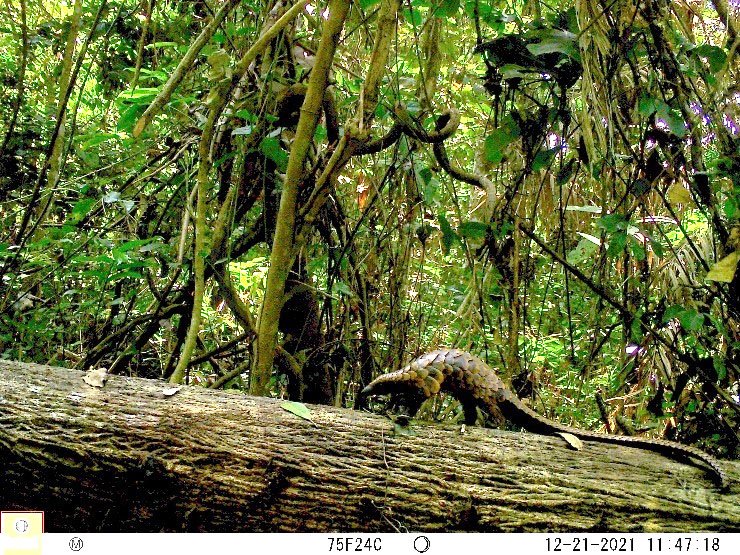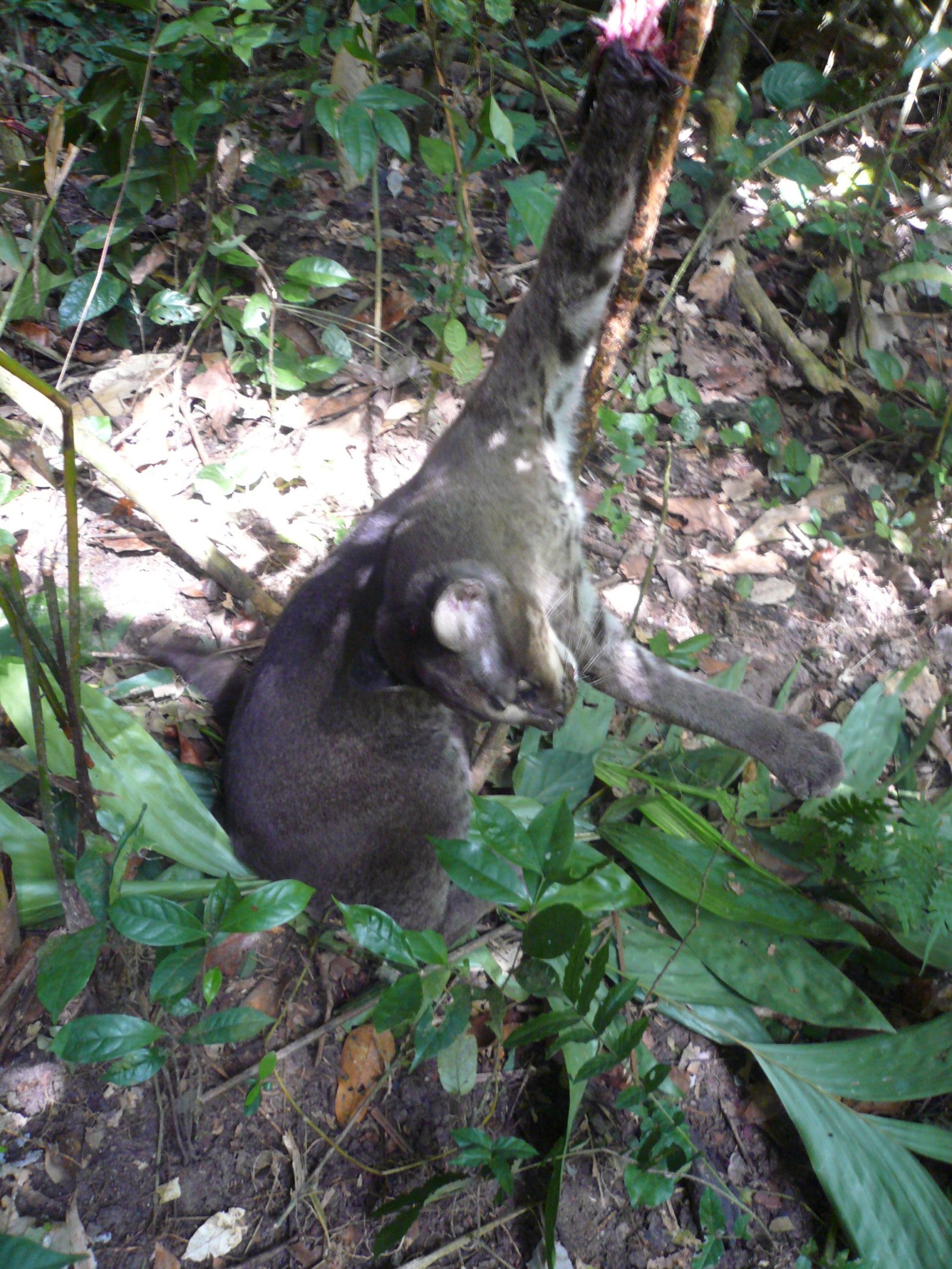Pangolin
Pangolins are small to medium-sized nocturnal animals that feed on ants and termites. They are members of the placental mammal order Pholidota, one of the most distinctive orders of mammals in terms of morphology. Four pangolin species are recognized from Africa (Phataginus tricuspis, P. tetradactyla, Smutsia gigantea, and S. temminckii)Please let us know (in the contact section, or let’s chat) If you know of other locations with ascertained pangolin presence but not included in the range map.
From the four African species, three are found in Cameroon and we have all recorded them using camera traps.

White-bellied pangolin recorded with camera trap travelling on a log in Mpem et Djim National Park, Cameroon © Franklin T. Simo

Giant pangolin recorded at a burrow entrance in Mpem et Djim National Park, Cameroon © Franklin T. Simo

Black-bellied pangolin recorded with camera trap travelling on a log in Deng Deng National Park, Cameroon © Ghislain F. Difouo
Pangolins have many exceptional traits opposing them to other mammal species, most apparent of which is their scales covered body forming a defensive armour. The secretive behaviours and distinctive morphology of pangolin species make population assessment and monitoring difficult. Pangolins are primarily nocturnal, solitary and occur at naturally low densities making observations difficult. Pangolins currently hold the unfortunate record of the most trafficked mammal globally. Major threats to pangolins include Intercontinental trade, domestic bushmeat and traditional medicine, deforestation, ornament, and electrocution. Another emerging threat include the indiscriminate killing of pangolins in snares (see photo)
African Golden Cat
The african golden cat is an elusive felid, infrequently seen in the wild that can be described as elusive.
Although the species is known to be highly susceptible to deforestation and hunting with traditional snares, its distribution is limited to the equatorial forest where the increasing rate of forest loss (commercial logging, clearing by farmers, construction of dams, roads and mining) and especially intensive hunting for bushmeat (>1 million Kg/year harvested in the Congo Basin) threaten the survival of many species (see the map).

Range map of the African golden cat showing countries of occurrence
P.S. Orange dots on the map indicates ascertained locations with golden cat presence.
Please let us know (in the contact section, or let’s chat) If you know of other locations with ascertained African golden cat presence but not shown on this map.
Conservation and research work in Uganda (Embaka) has inspired and supports passionate individuals in the species range countries to start conservation initiatives to save the African golden and pangolin species cat in their countries. CWCI is honoured and humbled to spearhead this movement.

Snared golden cat recorded in the Mpem et Djim National Park, Cameroon. © Bissek Jean-Pierre
The species has been eligible for Vulnerable status on the IUCN Red List of Threatened Species, with habitat degradation, loss and fragmentation, and bycatch in traditional snares being the main threats to its survival (see photo).




